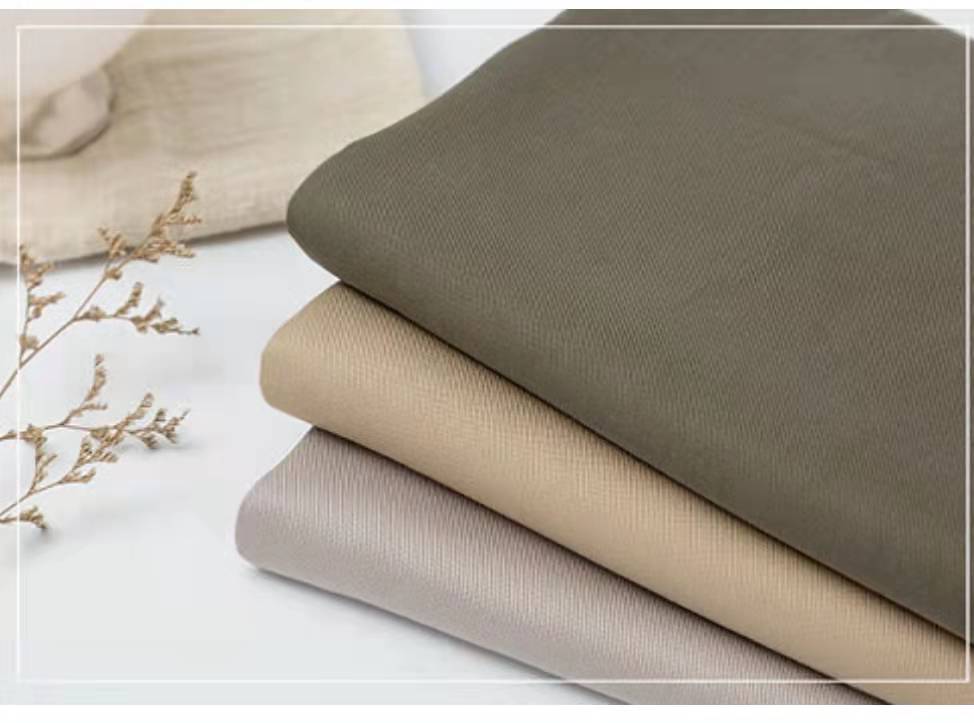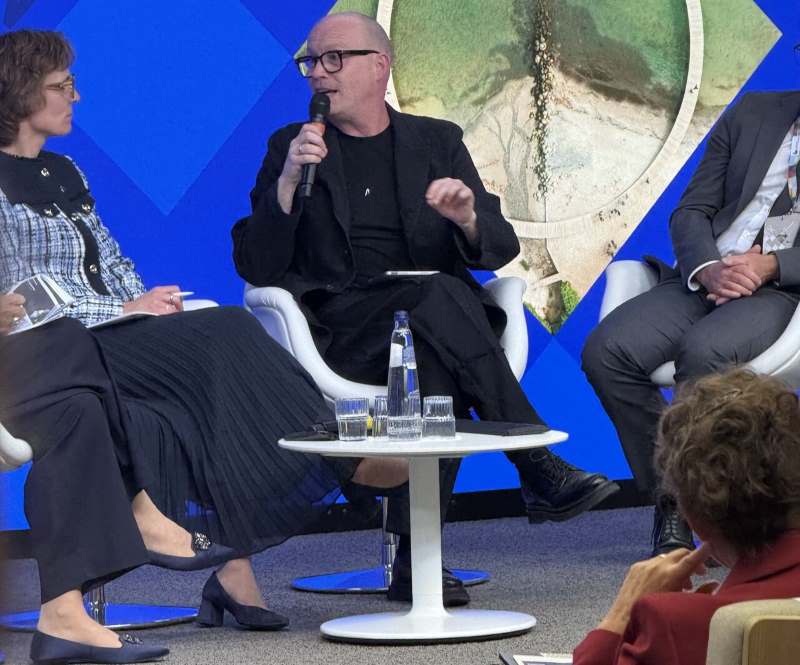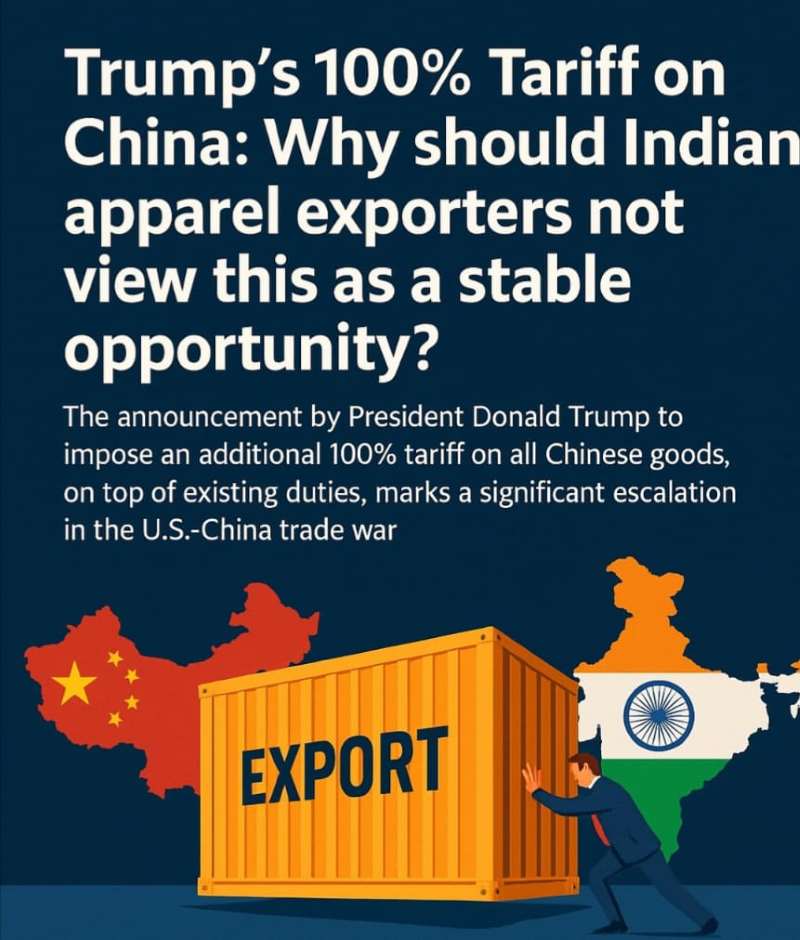
The recent job cuts announced by Lenzing, a pioneer in sustainable cellulosic fibers, are a stark reflection of the complex challenges facing Europe's textile industry. While the global fiber market is growing, this growth is overwhelmingly driven by low-cost, high-volume production of synthetic fibers, primarily polyester, in Asia. Lenzing's struggles are a wake-up call, highlighting a fundamental disconnect between consumer aspirations for sustainability and the economic realities of a market dominated by fast fashion and price competition.
A tale of two realities
The global textile fiber market is projected to reach approximately $63.42 billion by 2030, growing at a Compound Annual Growth Rate (CAGR) of about 4.5 per cent from 2025. This growth is led by rising populations and incomes in emerging economies. However, this growth is not evenly distributed. The market is bifurcated into two distinct segments:
Synthetic fibers: This segment, led by polyester, holds the largest market share. In 2024, polyester production reached an estimated 78 million tons, accounting for nearly 60 per cent of all textile fibers. Its dominance is due to its low cost, versatility, and durability, making it the material of choice for the fast fashion industry.
Man-Made Cellulosic Fibers (MMCFs): This category, which includes Lenzing's flagship products like Lyocell (Tencel), is a smaller, more specialized market. While the Lyocell market is growing, due to a desire for sustainable alternatives, its market size was only about $1.12 billion in 2024. The high production costs of these fibers limit their large-scale adoption, particularly in price-sensitive markets.
The disparity in market share and scale between these two categories is profound. While Lyocell is celebrated for its eco-friendly credentials (derived from wood pulp, a renewable resource, and produced in a closed-loop system), it struggles to compete on price with polyester. This price gap is a major barrier for consumers and brands alike.
Lenzing's financial tightrope
Lenzing's financial performance showcases the pressure from this market dynamic. While the company has seen some recovery, it continues to face headwinds.
Table: Lenzing group financial data (2024-2025 H1)
Indicator H1 2024 H1 2025 Revenue €2.66 bn €1.34 bn EBITDA €395.4 mn €268.6 mn Net Result after Tax -€138.3 mn €15.2 mn Employees (FTE) 7,816 7,712
Despite a positive net result in the first half of 2025 and a successful performance program, the company’s need for further measures to respond to the lack of market recovery and the intense competition in Asia points to a deeper systemic issue. The announced layoffs of up to 500 jobs at its Austrian headquarters underscore the company's efforts to optimize its cost structure and remain competitive.
The outsourcing of administrative functions to countries like the Czech Republic and India further demonstrates the need to cut costs to an extent not previously seen, even for a company with a strong brand and a reputation for sustainability.
The rise of China and the challenge of industrial policy
China's role in the global textile landscape is an important factor in Lenzing's predicament. China is not only the world's largest exporter of textiles but has also become a major producer of chemical fibers, including viscose, a direct competitor to Lenzing's products.
Manufacturing prowess: China has developed a complete and vertically integrated textile supply chain, from raw materials like cotton and chemical fibers to finished garments.
Government support: State-driven initiatives, such as the "Made in China 2025" plan, have prioritized the development of high-end, intelligent, and green manufacturing, further boosting the sector.
Cost advantage: Lower labor costs, economies of scale, and efficient supply chains give Chinese manufacturers a significant competitive edge in global markets.
This has created a challenging environment for European producers like Lenzing. While brands in Europe and North America increasingly demand sustainable materials, the vast majority of textiles are still produced and consumed within a system that prioritizes speed and low cost, a model China has perfected.
The aspiration-action gap
A study by GlobeScan in Europe found a gap between consumer aspirations for sustainable fashion and their actual purchasing behavior. While 71 per cent of consumers expressed a desire to shop more sustainably, the primary barrier was the higher cost of sustainable fashion (cited by 41 per cent of respondents).
|
Barrier to Sustainable Fashion in Europe |
% of Consumers (Aspirants) |
|
Higher cost |
41% |
|
Difficulty identifying sustainable items |
27% |
|
Not knowing where to shop |
24% |
|
Lack of knowledge |
21% |
|
Skepticism about claims (greenwashing) |
19% |
Source: GlobeScan, 2025. Based on a survey of Gen Z and Millennial consumers in France, Germany, Italy, Sweden, and the UK.
This data reveals the core issue, the ‘green premium’. Consumers want to make better choices but are often unwilling or unable to pay the higher price required to support sustainable production models like Lenzing's. This puts companies like Lenzing in a difficult position, caught between high operating costs in Europe and the pressure to compete with a global market that values affordability above all else.
A wake-up call or the end of an era?
Lenzing’s situation is more than a simple business downturn; it's a symptom of a larger systemic failure. It’s a wake-up call for Europe. The continent cannot simply rely on green marketing and consumer goodwill to sustain its industrial base. What's needed is a concerted effort that combines:
New business models: Companies must innovate beyond the linear model of fast fashion. This includes embracing circularity, product-as-a-service, and on-demand manufacturing to reduce waste and create value in new ways.
Real transformation: The entire value chain, from raw material sourcing to retail, needs to be re-evaluated for sustainability and efficiency, rather than just relying on marginal improvements.
Industrial policy: Governments must play a role in creating a favorable environment for sustainable production. This could involve targeted subsidies, favorable regulations that penalize unsustainable practices, and investments in research and development to reduce the cost of eco-friendly materials.
Without such a strategic shift, Lenzing's predicament could very well be the beginning of the end for European fiber production, ceding the market entirely to low-cost Asian competitors. It poses a fundamental question: can Europe's commitment to sustainability translate into a viable economic model, or is it destined to be a niche luxury, disconnected from the realities of the global marketplace? The clocks are indeed ticking.
Labor leaders in Bangladesh are protesting against a proposal by the apparel trade body to raise garment workers' wages by only 20 per cent.
The proposal was presented by Arshad Jamal Dipu, representing the Bangladesh Garment Manufacturers and Exporters' Association (BGMEA), during the fifth meeting of the Wage Board. The BGMEA's plan sets the minimum monthly wage at Tk 3,600 (approximately $43 USD), which includes a basic pay of Tk 2,400, a house rent of Tk 960, and a medical allowance of Tk 240. This figure falls far short of the workers' demand for a minimum wage of Tk 8,114 (approximately $96).
Sirajul Islam Rony, Representative, Garment Workers, called the BGMEA's proposal ‘illogical and inhumane.’
The laborers had expected, garment owners would offer higher wages taking into consideration the rising cost of living, added Rony
Echoing this sentiment, Fazlul Haque Montu, Executive President, Jatiya Sramik League, stated, the massive gap between the workers' demand and the owners' offer was unacceptable given the current cost of living.
Defending the owners' position, Dipu said the proposal was calculated based on the general inflation rate since November 2010, the rising production costs, raw material prices, and the industry's capacity. When questioned about the logic of a 20 per cent hike, he pointed out, while there are roughly 3,174 factories nationwide, about 1,000 to 1,500 are in the small category, suggesting a need for caution. He did, however, leave open the possibility for further negotiations on other allowances.
AK Roy, Chairman, Wage Board, confirmed, a few decisions were made based on the two proposals. These include having Wage Board members visit five garment factories (three in Dhaka and two in Chittagong) to meet with both workers and owners. Additionally, the members plan to visit Thailand, Vietnam, and Cambodia by the end of the current week to study their wage fixation processes and worker benefits.
The members agreed to hold their next meeting on October 21, following their local and foreign trips and the upcoming religious festivals of Eid and Durga Puja.
A global leader in sustainable technologies for the textile industry, Jeanologia organized an exclusive press tour at its booth during Kingpins Amsterdam.
The press tour allowed attendees to explore the ‘Mediterranean Soul’ collection, a new denim proposal that combines Mediterranean inspiration, creativity, and sustainability to showcase the future of denim production.
The tour showcased how combining Laser and G2 Indra technologies allows for hyper-realistic denim finishes while simultaneously protecting the environment and workers.
Attendees also learnt bout the eDesigner platform, which connects digital design directly to real-world production, thereby speeding up processes and significantly reducing the need for physical samples.
The press tour featured live demonstrations of the technology, and provided opportunities for attendees to interview Jeanologia’s representatives.
The 23rd Vietnam International Textile and Garment Industry Exhibition (VTG 2025) officially kicked off on October 15, 2025 in Ho Chi Minh City.
Jointly organized by the Vietnam National Trade Fair and Advertising Company (Vinexad) and Yorkers Trade & Marketing Service Co, this year’s show is a major international draw. It features over 400 exhibitors spread across 750 booths from 10 countries and territories, including China, India, Malaysia, Pakistan, Singapore, South Korea, and Thailand.
The three-day event is focused on the future of the industry, spotlighting the latest advancements in automated, digitalized, and advanced machinery. These innovations are crucial for advancing factory digitalization, directly supporting Vietnam's national digital transformation goals and efforts toward product diversification. Attendees will get a comprehensive look at the industry’s future, spanning everything from cutting-edge machinery and next-generation fabric and footwear solutions to quality control and auxiliary equipment for both domestic and international buyers.
More than just a trade show, VTG 2025 serves as a key platform for business networking, cooperation, and investment promotion, offering visitors a chance to explore new technologies, connect with global industry leaders, and update their market trend knowledge to shape their business strategies.
In a nod to global environmental concerns, VTG 2025 is also heavily emphasizing sustainability. According to Pham Dang Khanh, Deputy General Director of Vinexad, the exhibition includes a series of thematic seminars focused on circularity, functionality, and sustainability. These sessions bring together leading experts, pioneering manufacturers, and academic researchers. Their goal is to share insights on developing green supply chains and low-carbon production models, ultimately striving to foster a more sustainable and competitive future for Vietnam’s textile, apparel, and footwear sectors.
Retailers project, 15.8 per cent of their annual sales, worth a staggering $849.9 billion- will be returned this year, according to the 2025 Retail Returns Landscape report by the National Retail Federation (NRF) and Happy Returns, a UPS company.
The report estimates, 19.3 per cent of all online sales will be returned in 2025.
Katherine Cullen, Vice President-Industry and Consumer Insights, NRF, notes, returns are now a key strategic area. They provide an opportunity for retailers to create a positive experience for customers and can translate to brand loyalty, she adds.
Gen Z is also driving volume. Consumers between the ages of 18 and 30 averaged 7.7 returns of online purchases over the past year - more than any other generation.
Consumer expectations for the returns process are sharply increasing:
Around 82 per cent of shoppers now cite free returns as a major consideration when buying something, a significant rise from 76 per cent last year. Almost 76 per cent of them are more likely to choose a return option that offers an instant refund or exchange, valuing immediacy.
However, a bad experience can severely impact future business. Approximately 71 per cent of consumers say they are less likely to shop with a retailer after a poor return experience, and four out of five will share that negative story with family and friends.
Retailers are struggling to meet these high customer expectations while grappling with rising operational costs and external pressures like tariffs. Returns fraud remains a major issue, accounting for 9 per cent of all returns. Retailers report increases in costly incidents, including overstated quantity of returns, empty box or ‘box of rocks’ returns and decoy returns, such as sending back counterfeit items.
To combat this, 85 per cent of retailers are now employing Artificial Intelligence (AI) to detect or prevent fraud.
Meanwhile, around two-thirds consumers admit to ‘wardrobing’ (wearing and returning) or ‘bracketing’ (buying multiple sizes/colors to return what doesn't fit), and 45 per cent believe ‘bending the truth’ is acceptable when making a return.
Looking ahead, retailers anticipate, 17 per cent of holiday sales will be returned. To manage the spike and potential fraud, they plan to increase focus on third-party logistics, hire seasonal staff, and extend return windows.
A circular technology company, RE&UP highlighted its innovative circular textile solutions at the Textile Exchange 2025 Conference.
RE&UP is a key participant at Textile Exchange 2025, an event that gathers a global community of innovators, brands, and changemakers. The conference theme, ‘Shifting Landscapes: Connecting Environmental Adaptation and Systems Transformation,’ focuses on how the fashion industry can adapt, innovate, and speed up the transition to circularity.
On Day 1 of the event, Ebru Ozkucuk Guler, Chief Sustainability Officer, RE&UP participated in a panel discussion titled ‘Toward Impactful Textile-to-Textile Recycling Systems.’ She was joined by Suhas Khandagale, H&M and Cyndi Rhoades, Circle-8 Textile Ecosystems. The interactive session addressed the current and future supply of feedstocks for textile recycling, looked at new legislation, discussed sorting issues, and explored practical solutions to accelerate circularity.
Emphasizing on the need for ongoing brand dedication, Guler said, to create a solution, brands must stay committed, stepping back is no longer an option.
Beyond the panel, RE&UP is showcasing its pioneering circular solutions and working with brands and suppliers to turn sustainability pledges into measurable results. By linking practical solutions with policy insights and on-the-ground innovation, RE&UP is helping the industry move from theory to action, demonstrating that circularity is a tangible path forward.
RE&UP is a circular tech company aiming to reshape the traditional textile-to-textile model. The company produces Next-Gen Cotton and Next-Gen Polyester that perform just like virgin fibers. Backed by Sanko’s decades of textile innovation knowledge, RE&UP has created a seamless circular ecosystem that transforms end-of-life textile waste into high-quality raw materials at scale. This commitment opens up a more responsible and technologically advanced future for textiles and fashion.

The Indian textile and apparel industry has shown the first clear signs of being impacted by the new US tariffs, as export data for September 2025 revealed a significant decline. The figures, compiled by CITI, indicate that the US administration's decision to impose an additional 25% penalty on Indian goods, bringing the total tariff to 50% for many products, has already begun to affect the industry. The tariffs, which came into effect on August 27, 2025, have raised concerns among exporters about a future of dwindling orders and a potential loss of market share.
Sanjay K. Jain, Chairman of the ICC National Textiles Committee, stated, "Things will worsen as pipeline order book shipments get completed as new orders are not coming. Once a customer moves out, it's not easy to get him back. Once skilled labor moves out, it's not easy to get them back."
Apparel exports take a major hit
Apparel exports, a labor-intensive sector and a key employer in India, saw a particularly sharp drop. According to the CITI data, exports for September 2025 amounted to $1,288.75 million, a decrease of 12.83% compared to $1,478.43 million in September 2024. This decline reflects a grim reality for manufacturers who are already facing stalled orders and requests from US buyers to absorb a portion of the tariff burden, as highlighted by a recent industry survey.
Textile exports also down, industry fears worsening situation
The broader textile sector, excluding jute, carpets, and handicrafts, also experienced a downturn. Exports in this category fell by 9.17%, from $2,135.03 million in September 2024 to $1,939.29 million in September 2025. Industry experts express concern that these figures are just the beginning. As existing orders, secured before the tariffs took full effect, are shipped, the true impact of the trade barrier will be revealed. Many fear that new orders are not forthcoming, a situation that could lead to job losses and a drain of skilled labor, which, once moved, is not easily recovered.
A survey by the Confederation of Indian Textile Industry (CITI) further reveals the "domino effect" of the tariffs. About one-third of textile and apparel exporters have reported a turnover drop of over 50% in their US business. This decline is largely due to requests for discounts from US buyers and order cancellations. As a result, around 85% of firms are experiencing an inventory build-up, while over 80% are dealing with an extended credit cycle of 3 to 6 months, which is putting a "substantial strain on liquidity". The survey also found that two-thirds of exporters have been forced to offer discounts of up to 25% to remain competitive in the US market.
The data for September 2025 is summarized in the table below:
|
Particulars |
Sep 2025 |
Sep 2024 |
Growth (%) |
|
Apparel Exports |
1,288.75 (USD Million) |
1,478.43 (USD Million) |
-12.83% |
|
Textiles Exports |
1,939.29 (USD Million) |
2,135.03 (USD Million) |
-9.17% |
Note: Figures for the textile category exclude Jute, Carpet, and Handicrafts.
Goods exports to US down, overall exports up
While the textile sector reels, overall Indian goods exports to the US also saw a significant drop of nearly 12% to $5.5 billion in September. This is the first full month since the 50% tariffs were imposed by US President Donald Trump. Despite this, India's overall goods exports for September held steady, rising 6.7% to $36.4 billion, with overall exports up 7%. This indicates that sectors like electronics, which saw exports rise over 50%, are helping offset the decline in tariff-hit sectors. However, the trade deficit with the US ballooned to $32.1 billion, a 13-month high.
Bilateral Trade Agreement: A race against time
Meanwhile, diplomatic efforts are in motion to find a long-term solution. An Indian delegation is in Washington this week for trade talks, with the goal of finalizing the first phase of a Bilateral Trade Agreement (BTA). Both nations are aiming for a fall deadline to conclude the deal. The BTA could provide much-needed relief from the high tariffs and help Indian exporters regain their competitive edge. However, with each passing day, the industry faces the risk of losing customers and skilled workforce, making a swift resolution crucial to prevent a more severe crisis.
The Textile Institute (TI) is set to celebrate a significant milestone at the ITMA Asia+CITME textile machinery exhibition in Singapore later this month.
At Booth B105 in Hall 8, TI will exhibit as a reciprocal member of the British Textile Machinery Association (BTMA), highlighting the strength of their collaboration. The two organizations' long-standing partnership has recently been cemented by the appointment of Jason Kent, CEO, BTMA as new Commercial Vice President, TI. The move brings fresh industry perspective and influence to the role.
Corporate membership of The Textile Institute gives organizations access to an international network of professionals, cutting-edge research, and strategic benefits valued at over $12,700 (£10,000) a year, says Kent
This membership provides a wide range of advantages, including global promotion and visibility, invitations to high-level networking and training events, opportunities for collaboration on industry-led research, professional recognition through chartered qualifications, and access to TI’s publications, data, and R&D resources.
As the only global professional body in this sector with a Royal Charter, the Institute drives the industry forward through high-quality events and training courses that equip professionals for the future, notes Stephanie Dick, CEO, TI. Together with their Corporate Members, the Institute tackles skills gaps, developing practical training solutions, and reaching international audiences.
The Textile Institute is uniquely positioned to help organizations stay competitive, connected, and compliant. Though it was first founded in Manchester in 1910, its mission has always been to be ‘not of Manchester, but international.’ With active sections and special interest groups across the globe, it now serves members in over 60 countries, empowering professionals across every link in the textile supply chain.
Along with major trade bodies like CITI and SGCCI, The Northern India Textile Mills’ Association (NITMA) met officials from the Ministry of Textiles and Chemicals to register their intense opposition against the recommended anti-dumping duty (ADD) on Mono Ehtylene Glycol (MEG), warning the government it would deliver a ‘castatrophic blow to the sector. NITMA cautioned , the duty would devastate the predominantly MSME-based downstream industry, jeopardizing millions of jobs and freezing critical investments.
The industry's primary fear is the massive cost escalation the ADD would cause. The proposed duty is estimated to raise MEG costs by an additional 20 per cent.
This hike will practically force MMF units across India to shut down, stated NITMA. The industry is in such a state of shock and panic that unit owners are ready to hand over the keys to their factories, as they cannot sustain this devastating blow, it added.
The downstream sector is already struggling with uncompetitive raw material prices. Before the Bureau of Indian Standards (BIS) quality control order, domestic polyester staple fiber (PSF) was already 15–20 per cent pricier than what global competitors, such as those in China, paid. The BIS order has since allowed domestic fiber producers to charge a premium of Rs 6–Rs 7 per kg over imported parity. Imposing the ADD on MEG would widen this uncompetitive gap even further, to approximately Rs 10–Rs 11 per kg, severely crippling MSME units.
The associations have called on the government to reject the DGTR recommendation immediately to safeguard the future of the Indian MMF sector.
Indian textile exporters are actively searching for new customers in Europe and offering discounts to their current US buyers. This shift is a direct response to the impact of high US tariffs, which are reportedly as high as 50 per cent, according to industry executives.
In August, Donald Trump, President doubled tariffs on Indian imports, making them among the steepest for any US trading partner. This move has affected a variety of Indian goods, including garments, jewelry, and shrimp.
Trade negotiations between India and the EU have entered a critical stage, with teams working aggressively to meet a year-end goal for signing a free trade agreement.
The EU is currently India's largest trading partner for goods, with two-way trade reaching $137.5 billion in the fiscal year ending March 2024 - an increase of nearly 90 per cent over the last decade. Indian exporters are intensifying efforts to meet the EU's demanding standards related to chemicals, product labeling, and ethical sourcing, textile executives noted.
Exporters are upgrading their production facilities to comply with these requirements, according to Rahul Mehta, Chief Mentor, Clothing Manufacturers Association of India (CMAI). Mehta also added that exporters are keen to reduce their current dependence on the US market.
The US was India's largest market for textiles and apparel in the fiscal year to March 2025, accounting for almost 29 per cent of total exports, which were valued at roughly $38 billion.
Some exporters have already begun offering discounts to retain US customers, states Vijay Kumar Agarwal, Chairman, Creative Group, whose US exports represent a massive 89 percent of its total shipments.
Agarwal warned, if US tariffs continue to hurt business, the company could be forced to lay off 6,000 to 7,000 of its 15,000 workers. Furthermore, after six months, the company may consider moving production to countries like Oman or Bangladesh.
- 1
- 2
- 3
- 4
- 5
- 6
- 7
- 8
- 9
- 10
Polyester’s reign vs. Lyocell’s strain, can green fibers survive?
The recent job cuts announced by Lenzing, a pioneer in sustainable cellulosic fibers, are a stark reflection of the complex... Read more
Indian Textile and Apparel Exports Hit Hard in September: As US tariffs take hol…
The Indian textile and apparel industry has shown the first clear signs of being impacted by the new US tariffs,... Read more
Fast, cheap, unstoppable, Shein shockwave hits Germany’s fashion retial
In a country known for its deep-rooted retail traditions, discerning shoppers, and a growing emphasis on sustainability, the rise of... Read more
Europe’s Circular Turn: The Danish vision shaping a new industrial era
In a speech that captured both urgency and ambition, Danish MEP Rasmus Nordqvist stood before an audience of European policymakers,... Read more
“The US government’s economic data makes no sense. It’s a con.” says David Birnb…
“The US government’s economic data makes no sense. It’s a con,” declares David Birnbaum, strategic planner for the global garment... Read more
India's fiber sector spins a new thread of growth
India's clothing fiber sector is on the cusp of a revolutionary decade, moving beyond its traditional identity as a cotton... Read more
Global Supply Chain Earthquake: The 100% ‘Trump Tariff’ and the scramble for Chi…
The imposition of an additional 100% tariff on all Chinese goods by President Donald Trump—a move that underscores the fickleness... Read more
Trump's 100% Tariff on China: Why should Indian apparel exporters not view this …
The announcement by President Donald Trump to impose an additional 100% tariff on all Chinese goods, on top of existing... Read more
Yarn Expo Autumn 2025: A premier international platform for the yarn industry
Yarn Expo Autumn 2025 concluded a highly successful run, firmly establishing its position as the premier international platform for the... Read more
The Fashion Week of the Decade In Paris: A new chapter for the industry
The highly anticipated fashion week season, which came to a close recently in Paris, was not "business as usual". The... Read more










